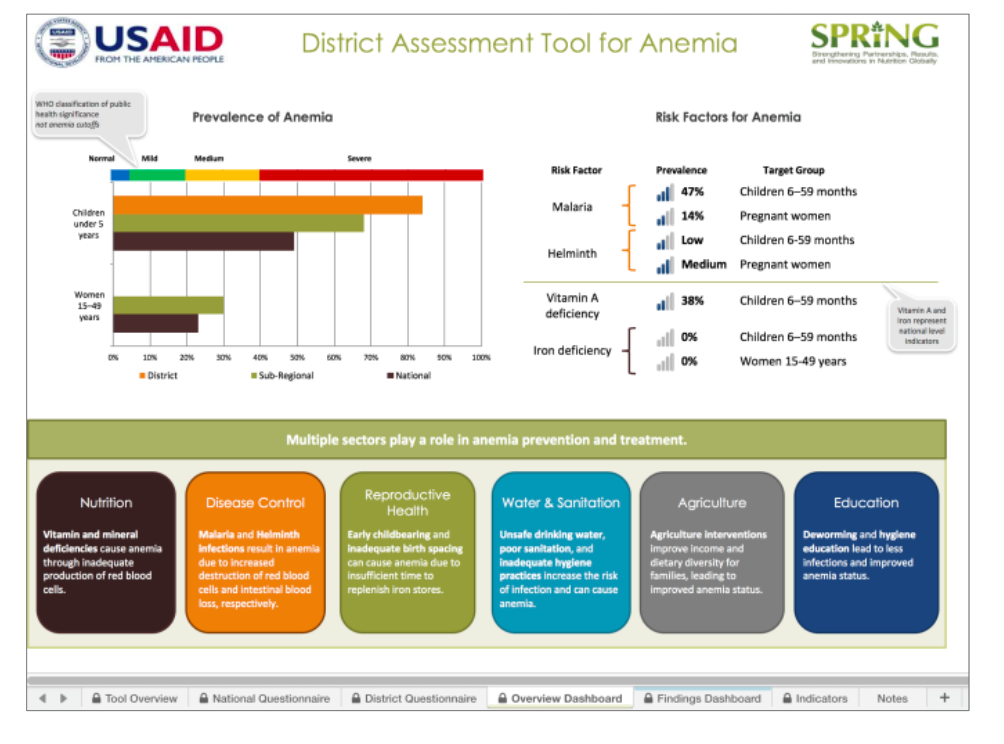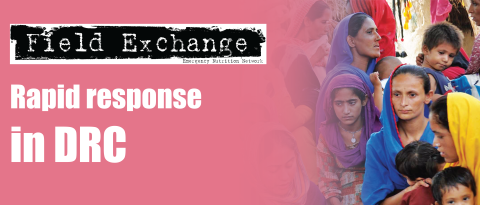New resources from SPRING on evidence-based programming for anaemia
Anaemia is a complex problem with many varied, inter-related causes. Successfully addressing anaemia requires a multi-sectoral approach that is tailored for the specific risk factors in each context, which may vary even between regions and districts within a country. The USAID-funded Strengthening Partnerships, Results and Innovations (SPRING) project recently released two tools that help policy-makers and programme designers to better understand the anaemia situation in their country or local area, and to design appropriate interventions to accelerate the reduction of anaemia.
Landscape Analysis Guidance
Conducting a landscape analysis to understand the anaemia situation in a specific context is the first step to improving anaemia reduction efforts in countries. In 2016, SPRING released the guide ‘Understanding Anaemia: Guidance for Conducting a Landscape Analysis’. This document presents a step-by-step guide to support government stakeholders and programme implementers in gathering and interpreting anaemia-related data in order to strengthen the use of evidence-based approaches to anaemia prevention and control. This guidance leads users through the process of conducting a landscape analysis for anaemia, providing references and examples to further explain each step. The tool can be accessed in an interactive, online format or downloaded as a PDF: https://www.spring-nutrition.org/publications/tools/anemia-landscape-analysis-tool
District Assessment Tool for Anaemia
The District Assessment Tool for Anaemia (DATA) is a global, Microsoft Excel-based toolkit that aims to increase awareness of anaemia among district-level actors and help them to prioritise activities to strengthen anaemia programming. The DATA tool identifies the local factors that contribute to anaemia, and helps participants to explore the opportunities and bottlenecks that exist for anaemia programmes in the district. DATA is completed during a two-day facilitated workshop, with active participation from district-level actors from multiple sectors, including health, water and sanitation, agriculture and education. Two accompanying resources, a DATA User’s Guide and a DATA Facilitator’s Guide, have been developed to guide users and workshop facilitators, respectively. The DATA package was piloted in three countries: Ghana, Uganda and Nepal. The DATA tool and guides are available online: https://www.spring-nutrition.org/publications/tools/district-assessment-tool-anaemia-data
 Footnote to figure: SPRING. 2016. District Assessment Tool for Anaemia: User’s Guide. Arlington, VA: Strengthening Partnerships, Results, and Innovations in Nutrition Globally (SPRING) project
Footnote to figure: SPRING. 2016. District Assessment Tool for Anaemia: User’s Guide. Arlington, VA: Strengthening Partnerships, Results, and Innovations in Nutrition Globally (SPRING) project


